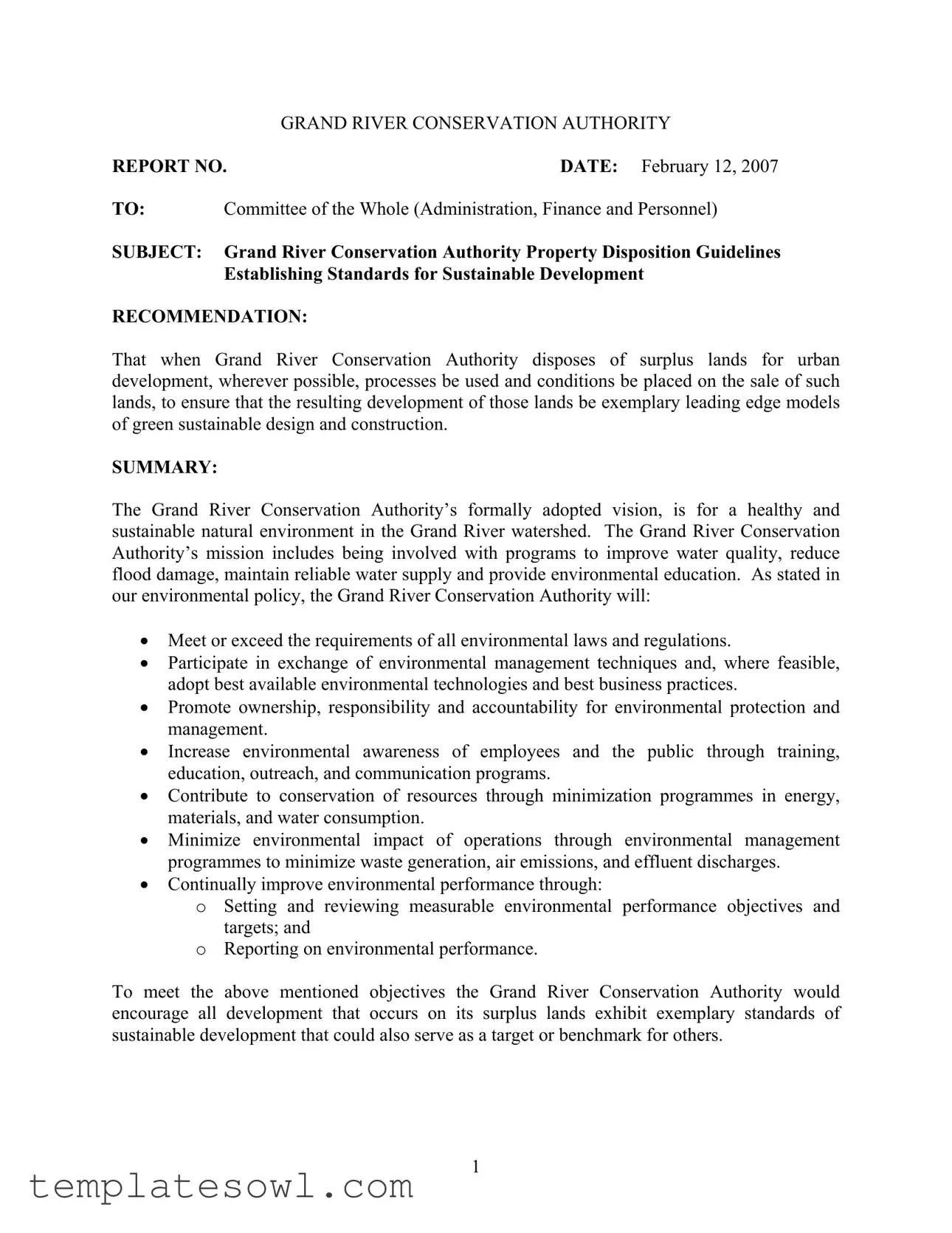What is the primary purpose of the Conservation Authority Report form?
The Conservation Authority Report form serves to communicate policies and guidelines regarding the disposition of surplus lands owned by the Grand River Conservation Authority. It emphasizes sustainable urban development practices and outlines how revenue from these land sales can be used for projects that align with the organization's mission of environmental sustainability.
What kind of lands are considered surplus and eligible for disposition?
Surplus lands are small parcels owned by the Grand River Conservation Authority that do not significantly contribute to environmental, educational, or recreational purposes. These lands are evaluated for their potential to be sold in a manner that promotes exemplary green development standards.
How does the Grand River Conservation Authority ensure sustainable development through land sales?
The Authority uses various methods, including requests for proposals and expressions of interest, to set specific conditions for developers. This ensures that only those willing to adhere to sustainable practices can acquire surplus lands. The goal is to promote environmentally responsible construction and land use.
What types of sustainable technologies might developers propose when bidding for surplus lands?
Developers may suggest a range of sustainable technologies, including solar systems, district energy solutions, rainwater recycling, and LEED-certified building practices. Each proposed development must focus on minimizing environmental impact while maximizing energy efficiency and resource conservation.
Are there financial implications associated with the conditions placed on property for sale?
Yes, setting conditions for sustainable development can slightly impact the potential selling price. The cost of implementing eco-friendly practices may increase development costs by approximately 5 to 10%. However, this additional expenditure can be offset by long-term energy savings, making it a worthwhile investment for developers.
What are the benefits of the Grand River Conservation Authority’s sustainable development policies?
These policies benefit both the community and the environment. By establishing high standards for sustainable construction, the Authority encourages innovation and responsible land management. Additionally, reduced energy consumption contributes to municipal sustainability goals, ultimately benefiting public health and the environment.
How does the Grand River Conservation Authority collaborate with municipalities regarding land development?
The Grand River Conservation Authority shares its objectives and guidelines with municipal staff to ensure alignment during the land development process. This collaboration fosters a unified approach to sustainable urban growth and assists municipalities in meeting their sustainability targets under the "Places to Grow" policy.
